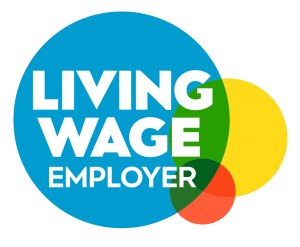William Morris, Lord Nuffield, employed thousands of workers to make millions of cars – and became a millionaire. But then he gave away most of his fortune to good causes in health care and education. Should we remember him as a ruthless capitalist or a generous philanthropist – or both?
To learn about William Morris we must understand a man, a business, a brand, an industry, an economic and social phenomenon, and the physical, social, and political transformation of Oxford. When he died in 1963, the Oxford Mail said that he was:
“The maker of modern Oxford… Lord Nuffield made a greater impact on the city and university than any other single individual in the whole of their history.”[1]
If that seems overstated, we might want to think about who made a greater impact. Or perhaps the idea of nominating a single individual is badly dated. The sixtieth anniversary of his death gives us a cue to reconsider Morris.
A Ruthless industrialist
William Morris was born in Worcester in 1877, the eldest of seven children. His parents moved to Oxford when he was three. He left school aged 15 and was apprenticed to a local bicycle-seller and repairer. Nine months later, after his employer refused him a pay increase, aged 16 he set up a business repairing bicycles in a shed at the back of his parents’ house in James Street. This business was a success. He opened a shop at 48 High Street and began to assemble as well as repair bicycles. He raced his own machines, competing as far away as south London. He did not confine himself to one distance or time and at one point was champion of Oxford (City and County), Berkshire and Buckinghamshire for distances varying between one and fifty miles. Part of his motivation – apart from the cups and medals he won – was to publicise his bikes. It was through cycling that he met his wife.
He began to work with motorcycles in 1901, and in 1902 rented a former stable in Longwall Street from which he repaired bicycles, operated a taxi service, and sold, repaired and hired cars. In 1910 he built new premises in Longwall Street, and still had to take more premises in Queen Street. Here, in 1912, he designed and built his first car, the Morris Oxford – also known as the Bullnose Morris. It was priced at £165. Soon he was making them by the hundreds.
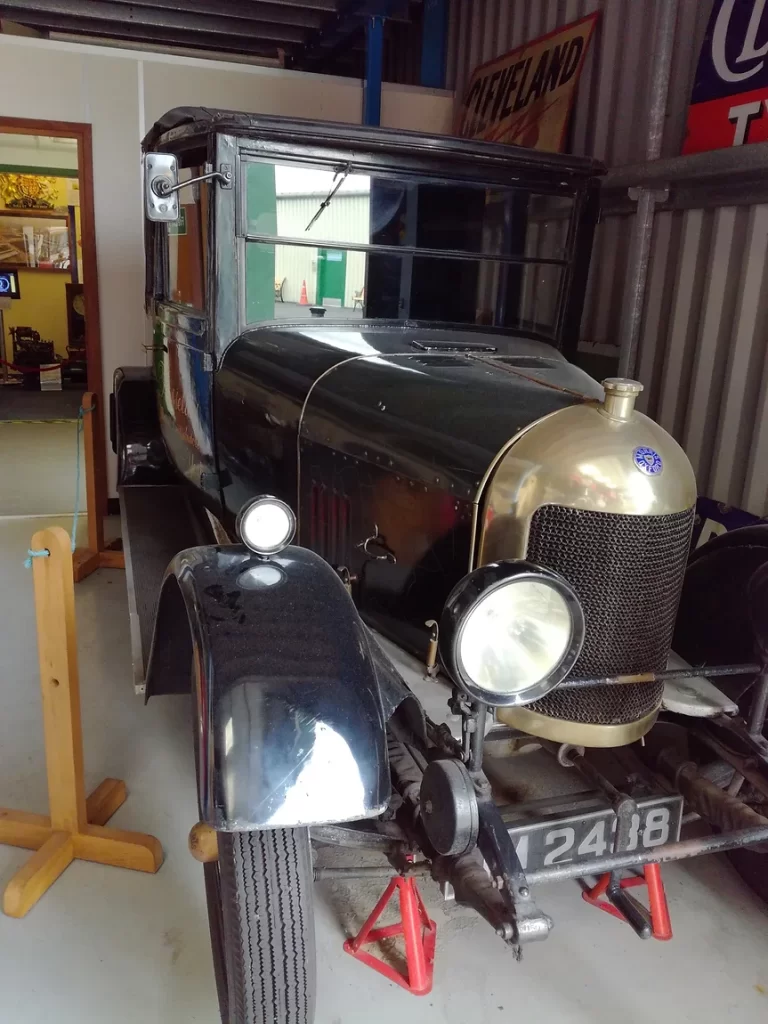
Almost as a sideline, about this time Morris set up Oxford’s first motor bus company.
Not having enough room to expand, Morris in early 1913 first rented and then purchased the derelict Military Training College in Holloway, Cowley. He used the three-storey building to assemble Bullnose Morris cars. He also lived in the Manor House within the college grounds. During late 1913, the old parade ground was covered with a 100,000 square foot building and formed the expansion area Morris needed. Morris Motors had arrived in Cowley. The Morris Motors works would soon expand out along both sides of Garsington Road and beyond the ring road.
By mass production on an assembly line, he got the cost down to make his cars affordable to the middle classes and eventually to the working class. By 1925 the factory was producing over 1000 cars a week. When demand fell after the Wall Street Crash, Morris produced his £100 car, a small, affordable eight-horse-power car: the Morris Eight. In the 1930s Morris had 30 percent of the British car market. By the early 1930s he was making 96,000 cars a year. By 1937 Morris Motors was the largest car manufacturer in Europe, and the next year reached the milestone of its millionth vehicle.
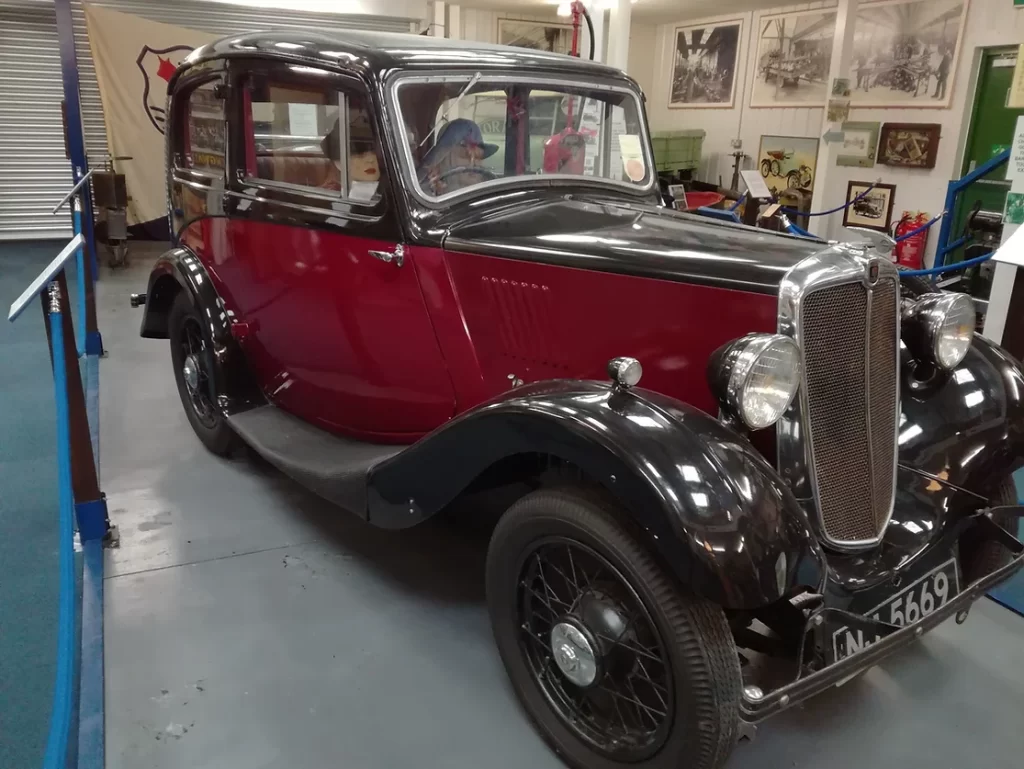
If you look at a photograph of a Morris car from the twenties or thirties, the most striking thing is that they are obvious precursors of cars you can see in the streets of Oxford today. They have four wheels and an internal combustion engine. But their ordinariness conceals what a revolution mass-produced, affordable cars were.
Mass production on an assembly line was an innovation, but the cars were made by men and women, not robots. That meant hard work with traditional tools, long tiring shifts, noisy and dangerous factories too hot in summer and too cold in winter, and tensions between workers and management.
Morris Motors played a major role in both world wars. In the first world war the factory made hand grenades and then naval mine sinkers. In the second war, the factory repaired and recycled crashed planes. The Works also made commercial vehicles, and Nuffield tractors.
Other car factories grew up in cities that were already industrialised. Morris Motors transformed Oxford from a university city to an industrial city. When Morris was growing up, the city was still dominated by the university. In the 1860s, the Great Western Railway had proposed to build a carriage-making works in Oxford, but the university objected and the works went to Swindon. When Morris was starting up, there was a boatbuilding business at Folly Bridge, a steam tractor factory at Cowley, Lucy’s ironwork in Jericho, and Oxford University Press. Morris started small, under the university’s nose. His premises on Longwall Street were rented from Merton College, and Merton went on to build him new premises there.
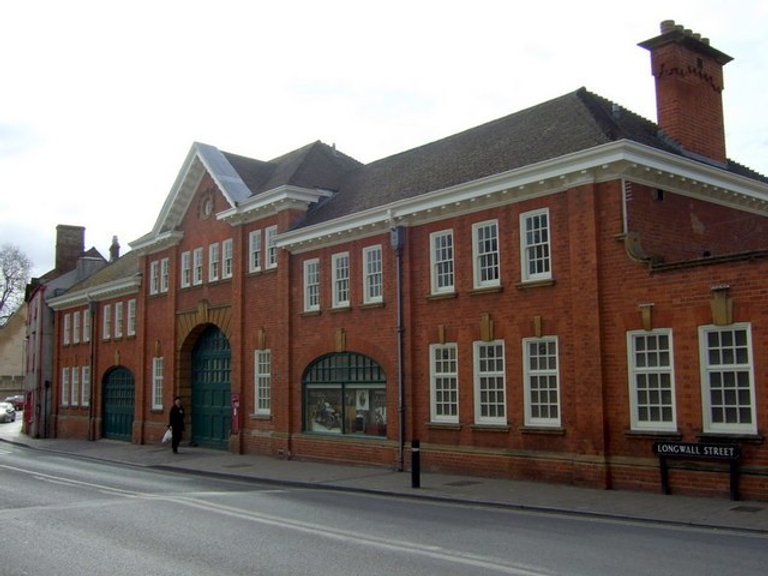
Once Morris Motors was up and running, the promise of well-paid jobs brought people here from less prosperous places during the depression of the 1930s. When a hunger march from South Wales to London passed through Oxford, some of the marchers noticed that there were jobs to be had here. Word got back to the Valleys. The Welsh clustered together, as migrants often do, in this case in the Florence Park estate, within walking distance of the Works. They brought with them a tradition of choral singing; the Oxford Welsh Male Voice Choir was formed in 1928 and still put on a regular programme of performances. Another tradition they brought with them was trade unionism. Despite William Morris’s hostility they successfully unionised the Works and Morris had to learn to work with them.
With this migration, Oxford was the fastest-growing city in the country between the two world wars, and doubled in size in the first half of the century. Most of the growth was east of the river – the Works were in Cowley, eventually covering 80 acres and extending to and beyond the ring road. The workforce lived near the Works, for instance in Florence Park, at first renting their homes. Later the city expanded further out, beyond the ring road, to Blackbird Leys. With mass car ownership, houses were built with garages, or at least drives, and the city sprawled outwards. The expanding city swallowed up villages – not just Cowley, but Headington, Marston, Wolvercote, Botley, Littlemore, and Iffley – and filled the gaps between them.
John Betjeman grumbled:
“East Oxford, where the works are, beyond Magdalen Bridge, is indistinguishable from Swindon, Neasden or Tooting Bec. The architectural development of Oxford since the war has completely changed the character of the city.” [2]
In the process the city changed from a safe Conservative seat into two seats, and Oxford East has been held by Labour since 1987. It would risk Oxford-Mail-style exaggeration to say that all these changes were because of Morris Motors, but the Works certainly had an impact.
A millionaire philanthropist
Morris Motors also transformed William Morris. By employing thousands of people to make millions of cars, he made himself a fortune, becoming the classic self-made millionaire. He was described as the richest man in England. He was made Viscount Nuffield in 1938. He was the Elon Musk of his day, but by contrast was a modest and un-ostentatious man. You can visit his house, Nuffield Place, near the village of the same name in the Chilterns, which gives a taste of his un-showy personality.
He was a great philanthropist during his lifetime, and when he died childless in 1963 his fortune went to the various charitable trusts he had set up, above all the Nuffield Foundation. He gave away about £30 million, equivalent to £700 million today.
He said:
“What I have been able to do for medicine and teaching in all walks of life has given me more satisfaction than anything else.”[3]
Morris had always wanted to be a doctor, and if he had been able to stay on at school that might have been his career. Much of his philanthropy went to medical causes: he endowed five Chairs in Oxford University Medical School, and established the Nuffield Orthopaedic Centre in Headington. He also manufactured and donated iron lungs for people affected by polio.
Nuffield College, in the city centre is a prominent example of Morris’s philanthropy – it was built in the 1950s, as Morris insisted, in a traditional design in Cotswold stone, and was Oxford’s first co-educational college and first all-graduate college. He intended it to specialise in engineering but the university persuaded him that it should specialise in the social sciences.
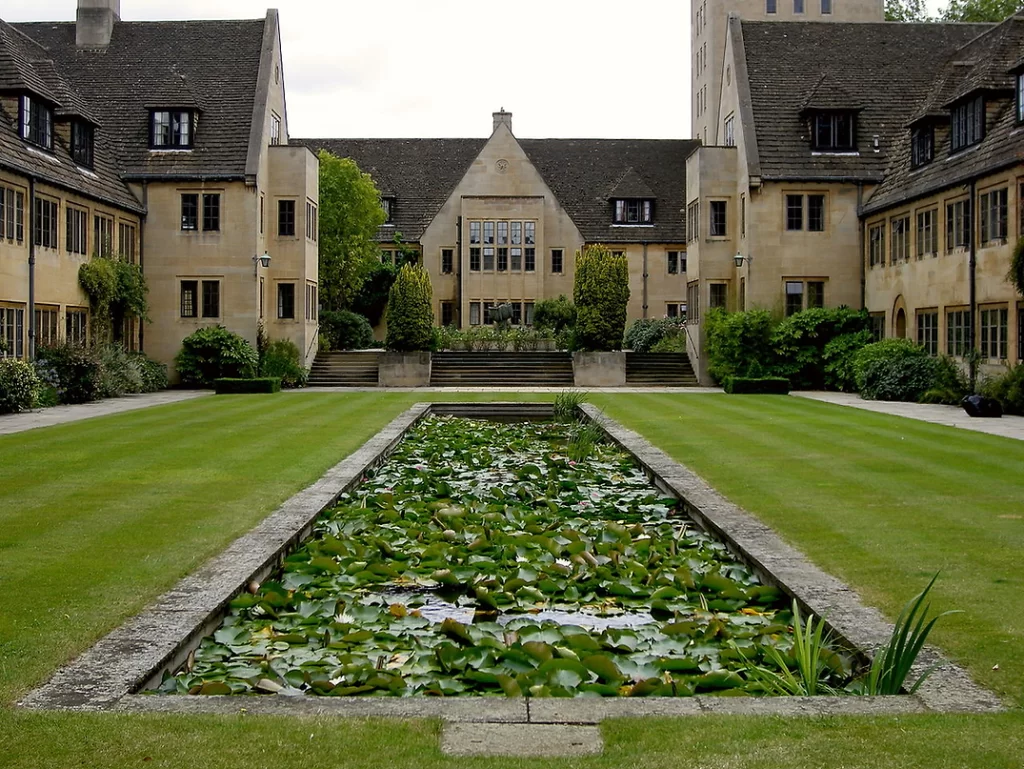
No account of Morris’s benefactions would be complete without mentioning that he gave £50,000 in 1930 to finance Oswald Mosley’s fascist New Party and later gave Mosley £35,000 to fund the anti-Semitic newspaper Action. The New Party morphed into the British Union of Fascists, and Morris ceased giving any public support to British fascists after 1932.
A gift is a gift, whatever motivates the giver: but maybe Morris’s generosity included a hint of a chip on his shoulder. As Betjeman put it:
“But it has always occurred to me that the great black wall of the University has shadowed his life. He has stormed it and won. Oxford is no longer primarily a University town, but primarily an industrial town.”[4]
We can hear this in Morris’s tone of voice:
“Whatever people may say about me, it is due to my money that every mother in Oxford can have her first baby in hospital.”[5]
An example of the paradox of capitalism
I will end by returning to the paradox I referred to in the title. Morris was a capitalist, whose business model was to pay his workers as little as he could, so as to make his cars affordable and still profitable – and to make him a wealthy man. He was ruthless, if not as red in tooth and claw as mill owners a century earlier. His workers had better pay and conditions than they would find in many other jobs in Oxford at the time; and for the migrants from South Wales, a job on any terms was better than remaining unemployed. When trade unions were established in the Works after 1934, they were able to press successfully for better pay and conditions.
However they came by their wealth, the rich have several options for how to use it. They can leave it to their children; spend it on building mansions and filling them with artworks; give the money to more or less worthwhile charities in ways that are more or less patronising and self-aggrandising; or some combination of these options.

William Morris died childless, so he didn’t have the option of leaving his money to his children, though he did have a wider family of nephews and nieces. He lived modestly at Nuffield Place; certainly more modestly than many rich men might. He started giving decades before his death, and gave the rest away when he died. His choice of good causes – mainly health and education – is, I think, uncontroversial. Maybe the University of Oxford didn’t desperately need another college, but no doubt students who have studied at Nuffield College have been grateful for its existence. Rich people continue to give money to establish new colleges, and to established colleges for new buildings.
Maybe there is no paradox. Morris was a successful capitalist entrepreneur, paid his taxes, and gave away most of his money, almost entirely to good causes. Morris Motors provided Morris with his wealth, and it also provided thousands of families with a good living, and almost accidentally transformed Oxford.
Written by Dave Dalton
Dave Dalton is retired, after working as a copywriter for Oxfam. He volunteers at the Ashmolean Museum, and is a guide on the City Sightseeing tour buses.
References
[1] David Horan, Oxford: a cultural and literary companion (Signal Books, Oxford 1999), p. 203
[2] John Betjeman, An Oxford University Chest (John Miles 1938), p 9.
[3] Horan, Oxford, p. 204
[4] Betjeman, Oxford University Chest, p. 155
[5] David Cranston and Peter Morris, Lord Nuffield and his double legacy (Words by Design 2018), p. 91
